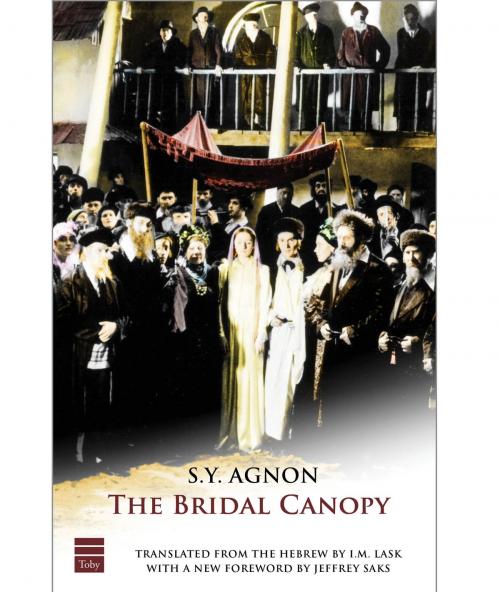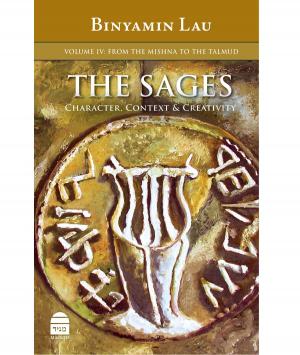| Author: | Agnon, S.Y. | ISBN: | 1230000438964 |
| Publisher: | The Toby Press, LLC | Publication: | May 19, 2015 |
| Imprint: | Language: | English |
| Author: | Agnon, S.Y. |
| ISBN: | 1230000438964 |
| Publisher: | The Toby Press, LLC |
| Publication: | May 19, 2015 |
| Imprint: | |
| Language: | English |
The Bridal Canopy, Nobel laureate S.Y. Agnon’s mock epic novel, is an elaborate frame story encompassing dozens of Hassidic tales. Set in early nineteenth-century Galicia, the plot is part quest, part comedy of errors, progressively departing from its opening tone of realism. It is the tale of poor Reb Yudel of Brody (in today’s western Ukraine, about 100 miles north of Agnon’s native Buczacz), his long-suffering wife, Frummet, and their three modest and righteous daughters, each in need of a bridegroom. The narrative is decisively double-edged: naïve, in the manner of classic folk tales, as well as sophisticated and artful, as a modern work. The Bridal Canopy parodies the Hassidic folk tale, but does so very delicately; it censures without acrimony, always maintaining an air of reverence for the Old World. Unlike other depictions of Eastern European Jewry’s shtetl life, the story is sufficiently subtle to support divergent readings – and that is clearly part of Agnon’s accomplishment. Other Hebrew- or Yiddish-language authors who portray this period level their criticism much closer to the surface. Agnon is responding to that kind of corrosive construction when he creates Reb Yudel, and is in dialogue with those authors of the generation preceding his own. Our author’s portrayal is not without bite, but it is drawn with a far gentler hand. Agnon always sees with a kind of double vision: simultaneously nostalgic for and critical of the Old World, neither a shill for tradition, nor attempting to undermine it. Adoration, or, alternatively, satirization of a worldview does not indicate, in and of itself, an author’s stance vis-à-vis that worldview. For Agnon, the situation is not one of either/or: he desires to simultaneously skewer and sacralize. In so doing, he asks what the past can offer the present and the future. And by posing such a question, Agnon invites his readers to consider their own destinations, despite the fact that his characters are not always able to make that journey forward.
The Bridal Canopy, Nobel laureate S.Y. Agnon’s mock epic novel, is an elaborate frame story encompassing dozens of Hassidic tales. Set in early nineteenth-century Galicia, the plot is part quest, part comedy of errors, progressively departing from its opening tone of realism. It is the tale of poor Reb Yudel of Brody (in today’s western Ukraine, about 100 miles north of Agnon’s native Buczacz), his long-suffering wife, Frummet, and their three modest and righteous daughters, each in need of a bridegroom. The narrative is decisively double-edged: naïve, in the manner of classic folk tales, as well as sophisticated and artful, as a modern work. The Bridal Canopy parodies the Hassidic folk tale, but does so very delicately; it censures without acrimony, always maintaining an air of reverence for the Old World. Unlike other depictions of Eastern European Jewry’s shtetl life, the story is sufficiently subtle to support divergent readings – and that is clearly part of Agnon’s accomplishment. Other Hebrew- or Yiddish-language authors who portray this period level their criticism much closer to the surface. Agnon is responding to that kind of corrosive construction when he creates Reb Yudel, and is in dialogue with those authors of the generation preceding his own. Our author’s portrayal is not without bite, but it is drawn with a far gentler hand. Agnon always sees with a kind of double vision: simultaneously nostalgic for and critical of the Old World, neither a shill for tradition, nor attempting to undermine it. Adoration, or, alternatively, satirization of a worldview does not indicate, in and of itself, an author’s stance vis-à-vis that worldview. For Agnon, the situation is not one of either/or: he desires to simultaneously skewer and sacralize. In so doing, he asks what the past can offer the present and the future. And by posing such a question, Agnon invites his readers to consider their own destinations, despite the fact that his characters are not always able to make that journey forward.















